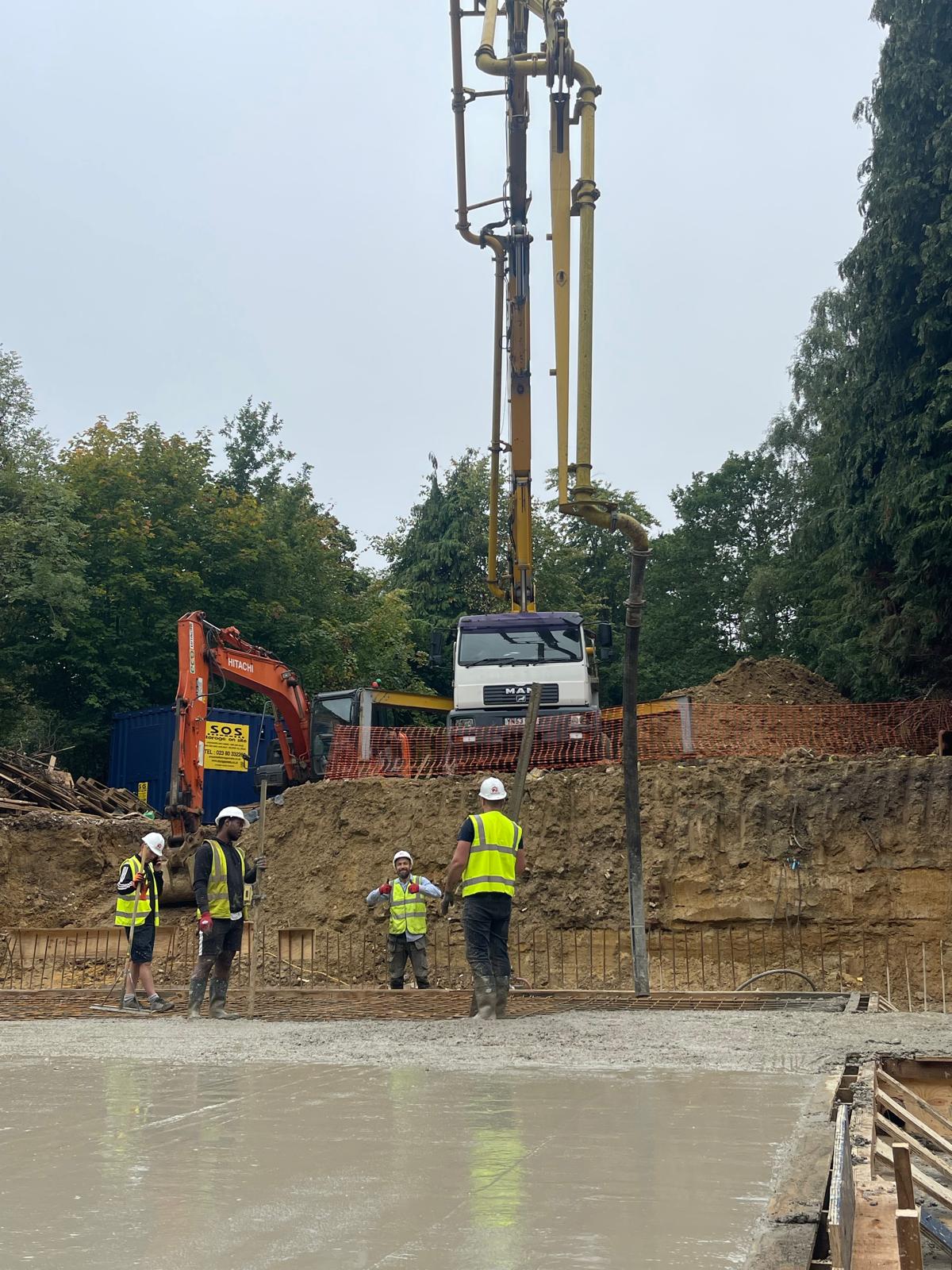Common Construction Challenges in Piled Raft Foundations
February 17, 2025

Common Construction Challenges in Piled Raft Foundations and How to Overcome Them
Piled Raft foundation is a strong load-bearing structure that helps carry building loads into the ground. However, its construction process is not free from challenges. The poor calculation of the weight distribution of the structure makes it ineffective. Besides, unsuitable soil conditions may also make it challenging to construct piled raft foundations. Find out the challenges of creating a strong piled raft foundation for your building. When you know its challenges, you may take necessary steps to eliminate them during the construction.
Understanding Piled Raft Foundations
The piled raft foundation has two main components: reinforced concrete piles and rafts. Your contractor will place reinforced concrete piles deep into the ground to transfer the building load to a stronger soil layer. Likewise, a reinforced raft works as a plate to distribute superstructure loads evenly on piles. Now, let's focus on some key challenges and possible solutions.
Key Construction Challenges and Solutions
a) Complex Soil Conditions - The spot you chose to construct a piled raft foundation may have unpredictable soil conditions. Sometimes, weak and unsettled soil lacks load-bearing capabilities to bear superstructure loads. It leads to developing cracks in the piled raft foundation. So, what might be the solution? Knowing your soil conditions might help. Before you install the piled raft foundation, conduct a thorough geotechnical investigation. You can also test the bearing capacity of the soil. Tests like Standard Penetration Tests, Cone Penetration Tests, and others can help determine the bearing capacity of the soil.
b) Structural Design Errors - If you didn't hire an experienced and capable contractor, your structure might have a design flaw. A proper design calculation involves considering the total area, number of piles and thickness of the raft. With a flawed structure design, your building may settle due to poor load distribution. The solution is using advanced technology and an experienced piled raft foundation contractor. Technologies like Building Information Modelling (BIM), 4D modelling, and AI are revolutionising the construction industry. Your contractor may reduce design flaws with these technologies.
c) Pile Installation Problems - Weak surfaces cannot carry building loads. Concrete piles go deep into the ground to transfer building load to a stronger soil layer. But, if your contractor did not dig deep or the piles are not strong enough, you're in trouble. Piles may crack or break; otherwise,, your building may settle. I hope you understand how vital the installation process is! CFA piles, driven piles and other advanced concrete piles help maintain balance in the structure. You should also ensure that your contractor uses the best-in-class materials to build the structure.
d) Water Table and Drainage Issues
in some places, you might experience a high water table. It disrupts the whole excavation work, as water fills the hole quickly. It often happens when the underground water level rises due to heavy rain or water coming from higher ground. You can use an electric pump to clear water out of the hole. A better solution would be not to drill holes at all. Continuous Flight Auger piles or Driven piles are the best piling options for such soil. This would save time and resources to construct piles into the ground.
e) Material Quality and Selection
Poor concrete materials and low-quality reinforced rods don't last longer. With time and ground pressure, reinforced piles become weak. Its load-bearing capacity also decreases. When it comes to maintaining structure quality, use the best quality materials. Choose the best quality corrosion-proof steel rods in the concrete piles. It will keep the structural integrity of the piles intact for a prolonged time while underground.
f) Construction Delays and Cost Overruns
It is a common issue in most construction projects. Delays in projects and exceeding project costs may occur for various reasons. If you don't communicate properly with your contractor, they may not know what you want. Ultimately, you get a flawed and poorly constructed piled raft foundation. Unplanned environmental challenges such as rain, flood, or landslides can halt the project. It results in project delays. In both cases, you need upfront measures. For example, communicating with the contractor before you start the project may save you time. Likewise, the weather prediction for the next few days should be reviewed to protect project work as much as possible. You can also use project management software to manage the project workflow.
Best Practices for Successful Piled Raft Foundation Projects
First, a site survey and soil testing will be conducted. It will determine if the soil has the desired load-bearing capabilities. Appropriately communicate with the workers and contractors to reduce design flaws. Besides, the work efficiency of the workers will increase. You should also try to adopt a sustainable construction method. It helps in saving project costs and protects the environment.
Conclusion
In short, installing piled raft foundation can be challenging if you do not know what these challenges are. Poor soil quality and lack of experience in the contractor can result in poorly designed structures. Hire our contractors at Piled Raft Foundation to avoid design flaws and poorly constructed foundations.